
 9th June, 2025
9th June, 2025This blog was originally written for and posted on the Modern Energy Cooking Services programme website and available here.
Written By: Krishna Keshavani (Prabhat Education Foundation)
Translation and Paraphrasing By: Katha Bhatt (Prabhat Education Foundation)
Edited & Inputs By: Pramila Mishra (Prabhat Education Foundation), Dr. Amita Bhakta (Independent Consultant)
In research, we often seek two types of information: what can be observed and recorded, and what can be felt and experienced. While observation and verbal accounts provide valuable data, capturing the nuanced emotions tied to those experiences requires methods that transcend direct articulation. But when a study commits to understanding these inner experiences, the method used becomes just as important as the message itself.
Our study on access to energy for people with disabilities in Ahmedabad, India, led by Prabhat Education Foundation and Dr. Amita Bhakta for the MECS programme, embraced this challenge by employing the expressive power of drawing. The journey of implementing this method proved to be a fascinating exploration of trust, communication, and the unique ways individuals visualize their realities
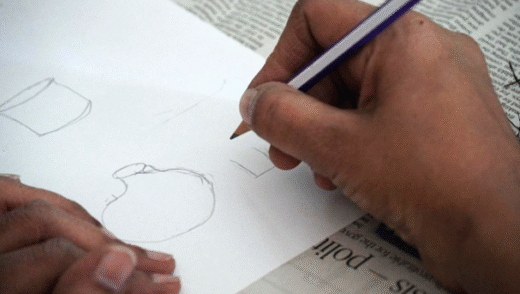
Figure 1: Sketching exercises in the drawing method. (Drawing ©: Makwana Ramilaben, Photo by Prabhat Education Foundation, Location: Bhaipura Resource Centre)
This blog shares the journey of how we used drawing as a research tool — what worked, what surprised us, and what we learned along the way.
Drawing was chosen as one of the tools in our study because it provides a visual outlet for participants to share their everyday realities. It invited non-verbal, intuitive, and personal storytelling. To ensure a systematic approach, we developed a detailed guideline, recognizing that the success of this method hinged on a strong connection and mutual understanding between the researcher and the participant. It became crucial to clearly communicate the research objectives and the kind of information we sought through this exercise. The process of “conveyance” was as vital as the drawing itself; without a shared understanding, the richness of the data risked being lost.
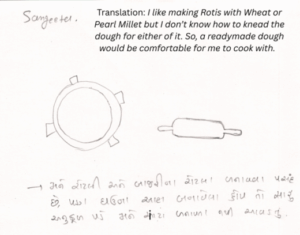
Figure 2: Participant drawing what she likes about cooking (Drawing ©: Sangeeta Vaghela, Photo by Prabhat Education Foundation, Location: Bhaipura Resource Centre)
Initially envisioning individual drawing sessions, our tool testing revealed a significant hurdle: a hesitation among participants to express themselves through art. Many felt inadequate in their drawing skills, fearing they couldn’t do justice to their experiences. That’s when we made a pivotal decision — instead of conducting individual drawing sessions, we would host guided workshops that turn drawing into a collective, supported process. We adapted our guidelines, refined our prompts, and introduced facilitators trained in expressive art and inclusive communication to create a safe and inspiring space.
We conducted two workshops in Ahmedabad — one at Bhaipura Community Resource Centre of Prabhat Education Foundation and another at a Deaf and Mute School. Each venue had different groups of participants, and both required tailored approaches to communication and facilitation.
Before each workshop, we held a detailed orientation session for facilitators, introducing them to the research objectives, expectations from the drawing tool, and nuances of inclusive engagement. We prioritized diversity and inclusion in participant selection, considering age, gender, and disability. Drawing materials were carefully prepared based on the facilitators’ guidance. In workshops with participants having multiple disabilities, we formed smaller groups with dedicated facilitators who could communicate instructions effectively.
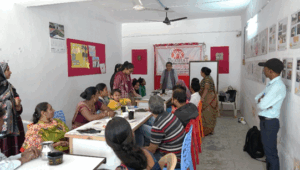
Figure 3: Art workshop held in Bhaipura, Ahmedabad (Photo: Prabhat Education Foundation)
The workshops began with a clear, step-by-step explanation of the study, followed by a careful consent process. At the Deaf and Mute School, this required additional time and adapted communication strategies—such as visual aids, simplified language, and repeated clarifications—to overcome limitations in vocabulary and ensure full comprehension. We emphasized that drawing was merely a medium for expression, encouraging participants not to focus on artistic perfection. This fostered an environment where they felt comfortable opening up and engaging deeply with the process. Following this, the drawing process commenced. It was designed to be gentle, empowering, and participatory:
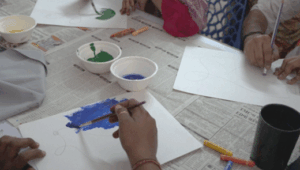
Figure 4: Warm up activity at the art workshop in Bhaipura, Ahmedabad (Photo: Prabhat Education Foundation)
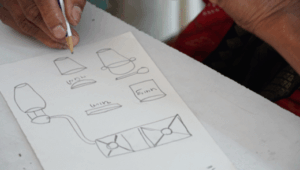
Figure 5: Drawing challenges with kitchen design (Drawing ©: Geetaben Munani; Photo: Prabhat Education Foundation, Location: Bhaipura Resource Centre)
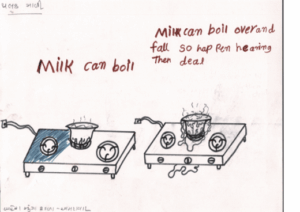
Figure 6: Drawing showcasing the challenges in the process of cooking (Drawing ©: Palak Maali, Photo: Prabhat Education Foundation, Location: Deaf and Mute School)
Some participants were eager to express themselves and shared powerful stories. Others struggled with the drawing itself but contributed thoughtful verbal narratives that complemented their images. A few simply drew things they liked — reminding us that freedom of expression must always come before data.
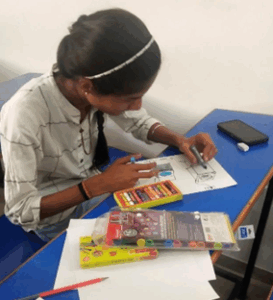
Figure 7: Drawing of energy challenges for deaf participants (Drawing ©: Nirali Sarvaiya, Photo Credit: Prabhat Education Foundation, Location: Deaf and Mute School)
The drawing workshops provided a fascinating and insightful avenue for understanding the energy experiences of people with disabilities. The visual narratives, coupled with the participants’ explanations, offered a rich layer of qualitative data, revealing both challenges and aspirations in ways that traditional methods might not fully capture. We didn’t just collect data — we created a community, and offered participants a space to express their realities in their own way.
In doing so, the humble crayon became a tool of research, reflection, and resistance.
A few of these drawings were photographed, explained, and recorded. These stories will be analyzed for recurring themes, helping us build a more nuanced, inclusive understanding of energy access.
Our thanks go to all the participants, Vinitaben Modi, Mittalben Joshi and Jagrutiben Joshi for their facilitation of the drawing workshops for this research, the staff at the Prabhat Education Foundation’s Bhaipura Centre and the Deaf and Mute School in Ahmedabad for their support.